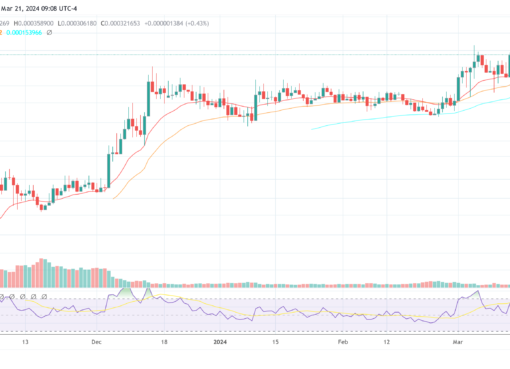Introduction to Blockchain and Insurance
Blockchain technology has been making waves across various industries, promising unprecedented levels of security, transparency, and efficiency. The insurance industry, a critical pillar of the global economy, is no exception. With an increasing number of use cases emerging, blockchain has the potential to transform the insurance sector, paving the way for new opportunities and growth.
At its core, blockchain is a decentralized digital ledger that records transactions across a network of computers. Its distributed nature ensures that data is securely stored and cannot be tampered with, creating a trustless environment. This innovative technology enables a host of potential applications, such as the creation of smart contracts, which can automate processes and reduce the need for intermediaries.
The insurance industry plays a vital role in safeguarding individuals, businesses, and economies against various risks. It manages trillions of dollars in assets and contributes significantly to financial stability. As such, the integration of blockchain technology into the insurance sector has the potential to revolutionize its operations, customer experience, and risk management capabilities.
In this article, we will explore the applications of blockchain in the insurance industry, its benefits, and the challenges it faces. We will also delve into real-world case studies and examine the future outlook for blockchain’s role in the insurance sector. By doing so, we aim to provide a comprehensive understanding of how blockchain can transform the insurance landscape, offering valuable insights for both industry professionals and interested readers alike.
Applications of Blockchain in the Insurance Industry
As the insurance industry continues to evolve, blockchain technology is opening new doors for innovation and efficiency. In this section, we will discuss some of the most promising applications of blockchain in insurance, highlighting how this technology is redefining the sector.
Smart Contracts for Automated Claims Processing
One of the most significant applications of blockchain in insurance is the utilization of smart contracts. These self-executing contracts have predefined rules and conditions embedded into their code, automating the execution of agreements once the specified criteria are met. In the insurance industry, smart contracts can streamline claims processing, ensuring faster payouts and a higher degree of accuracy. By reducing manual intervention and human error, smart contracts can significantly improve efficiency, lower operational costs, and enhance customer satisfaction.
Fraud Detection and Prevention
Insurance fraud is a significant concern that costs the industry billions of dollars each year. Blockchain’s immutable ledger and transparent nature can play a crucial role in combating fraud by providing a tamper-proof record of claims and transactions. This capability allows insurers to identify suspicious patterns, track fraudulent activities, and collaborate with other industry participants to prevent fraud, thereby saving money and protecting customers.
Identity Management and Customer Data Security
Data security and privacy are critical concerns in the insurance industry. Blockchain can offer secure identity management solutions that protect customer data while streamlining the authentication process. By leveraging decentralized identifiers, customers can control their personal information and share it selectively, reducing the risk of data breaches and simplifying the onboarding process for insurers.
Reinsurance and Risk Management
Reinsurance is a crucial aspect of the insurance industry, providing a safety net for insurers against significant losses. Blockchain can revolutionize the reinsurance process by facilitating secure and transparent data sharing between insurers and reinsurers. This increased visibility allows for better risk assessment, more accurate pricing, and faster settlements, ultimately leading to more effective risk management practices.
Tokenization of Insurance Products and Services
Blockchain enables the tokenization of assets, including insurance products and services. Through tokenization, insurers can create digital representations of policies, allowing for easier management, transfer, and tracking. This innovation can lead to the development of new business models and the expansion of insurance offerings to previously underserved markets, driving growth and fostering financial inclusion.
Benefits of Implementing Blockchain in Insurance
The adoption of blockchain technology in the insurance industry presents numerous benefits that can lead to substantial improvements in operational efficiency, customer satisfaction, and overall growth. In this section, we will explore some of the most notable advantages of integrating blockchain into insurance processes.
Increased Efficiency and Reduced Operational Costs
Blockchain’s ability to streamline processes, automate tasks, and eliminate intermediaries can significantly enhance operational efficiency within the insurance industry. By leveraging smart contracts and decentralized data storage, insurers can expedite claims processing, reduce manual intervention, and minimize errors, leading to considerable cost savings and improved turnaround times.
Enhanced Trust and Transparency
Transparency is a key attribute of blockchain technology, with every transaction or data update being traceable and visible to all participants within the network. This feature promotes trust and accountability, enabling insurers to establish more transparent relationships with their customers and partners. By fostering a greater sense of trust, blockchain can contribute to improved customer loyalty and long-term business success.
Improved Customer Experience and Satisfaction
Blockchain technology can significantly enhance the customer experience in insurance by simplifying the onboarding process, expediting claims settlement, and offering more personalized products and services. By utilizing secure digital identities and automating policy management, insurers can provide a seamless, user-friendly experience, which in turn leads to increased customer satisfaction and retention.
Reduction in Human Error and Manual Processes
The automation capabilities of blockchain, particularly through the use of smart contracts, can help minimize human error and reduce the reliance on manual processes in insurance operations. By automating tasks such as claims processing, underwriting, and policy issuance, insurers can improve the accuracy and consistency of their services, reducing the likelihood of errors and disputes.
Facilitation of Global Collaboration and Partnerships
Blockchain’s decentralized nature encourages cross-border collaboration and data sharing, enabling insurers to forge stronger partnerships and access new markets. By streamlining communication and fostering trust between industry participants, blockchain can pave the way for the development of innovative insurance products and solutions that cater to an increasingly globalized and interconnected world.
|
Process |
Traditional Insurance |
Blockchain-enabled Insurance |
|
Policy Issuance |
Manual, paper-based |
Automated, digital |
|
Premium Calculation |
Centralized, less transparent |
Decentralized, transparent |
|
Claims Processing |
Time-consuming, prone to errors |
Efficient, automated |
|
Fraud Detection |
Reactive, resource-intensive |
Proactive, data-driven |
|
Data Sharing |
Limited, siloed |
Real-time, secure |
|
Customer Experience |
Less personalized, slower |
Customized, responsive |
Table 1: Comparison of Traditional Insurance Processes and Blockchain-enabled Processes
Challenges and Limitations of Blockchain Adoption in Insurance
While blockchain technology offers numerous benefits to the insurance industry, its implementation is not without challenges. In this section, we will address some of the most prominent obstacles and limitations that insurers may face when adopting blockchain solutions.
Regulatory and Legal Hurdles
The insurance industry is heavily regulated, with laws and regulations varying across jurisdictions. The adoption of blockchain technology may require navigating complex legal frameworks and obtaining regulatory approvals, which can be time-consuming and costly. Additionally, as blockchain technology continues to evolve, regulatory bodies may need to establish new guidelines and policies to address emerging use cases and potential risks.
Scalability and Performance Concerns
Scalability is a critical concern for blockchain implementations, particularly in industries that require high transaction throughput and real-time processing. While advancements in blockchain technology have improved scalability, some platforms may still struggle to handle the volume of transactions and data storage requirements of large insurance operations. Insurers must carefully evaluate the performance capabilities of blockchain platforms to ensure they can support their business needs.
Integration with Existing Systems and Processes
Integrating blockchain solutions with existing insurance systems and processes can be a complex and challenging endeavor. Insurers may need to invest in the development of custom interfaces and adapt their current infrastructure to accommodate blockchain technology. This process may require significant time, resources, and expertise, potentially delaying the realization of benefits.
The Need for Industry-Wide Standardization and Collaboration
For blockchain technology to reach its full potential in the insurance industry, standardization and collaboration are crucial. Insurers, reinsurers, and other industry stakeholders must work together to establish common protocols, data formats, and best practices. Without these standards, the adoption of blockchain technology may become fragmented and less effective, limiting its overall impact on the industry.
Data Privacy and Security Concerns
While blockchain technology offers enhanced security and data protection, it also raises privacy concerns due to its transparent nature. Insurers must strike a balance between providing transparency and protecting sensitive customer information. Additionally, the immutable nature of blockchain can present challenges when it comes to complying with data protection regulations, such as the right to be forgotten. Insurers must carefully consider these privacy and security implications when implementing blockchain solutions.
|
Use Case |
Description |
Benefits |
|
Smart Contracts |
Self-executing contracts that automate processes |
Reduced processing time, increased efficiency |
|
Fraud Detection |
Improved data sharing and analysis for fraud prevention |
Lower costs, enhanced trust |
|
Parametric Insurance |
Automated payouts based on predefined triggers |
Simplified claims, better customer experience |
|
Proof of Insurance |
Digital verification of insurance coverage |
Faster verification, reduced fraud |
|
Reinsurance |
Streamlined data sharing and settlement in reinsurance |
Enhanced collaboration, lower costs |
Table 2: Examples of Blockchain Use Cases in Insurance
Case Studies: Successful Blockchain Implementations in Insurance
In this section, we will examine select real-world examples of blockchain implementations in the insurance industry, analyzing the strategies employed, outcomes achieved, and lessons learned from these initiatives.
Overview of Select Real-World Examples
- Etherisc: Etherisc is a decentralized insurance platform that utilizes blockchain technology to create and manage insurance products. Their flagship product, a decentralized flight delay insurance solution, uses smart contracts to automate claim payouts when a flight delay occurs, without requiring manual intervention. Etherisc aims to improve efficiency, transparency, and accessibility in the insurance market by offering a range of decentralized insurance products.
- Lemonade: Lemonade Insurance is a tech-driven insurance platform that leverages blockchain technology and artificial intelligence to create a peer-to-peer (P2P) insurance model. Lemonade aims to make the insurance process more transparent, efficient, and accessible by offering homeowners and renters insurance policies. While not built entirely on blockchain, Lemonade has integrated the technology to manage some aspects of the platform.
- IBM Blockchain and Marsh: IBM Blockchain, in collaboration with Marsh, a global insurance broker and risk management firm, has developed a proof of insurance platform that streamlines the process of verifying and sharing insurance certificates. By using blockchain technology, the platform aims to improve efficiency, reduce fraud, and enhance collaboration between insurers, brokers, and clients.
|
Company/Consortium |
Blockchain Solution |
Focus Area |
|
Etherisc |
Decentralized Insurance Protocol |
Flight delay insurance, P2P insurance |
|
Lemonade Insurance |
P2P Insurance Platform |
Homeowners and renters insurance |
|
IBM Blockchain and Marsh |
Proof of Insurance Platform |
Insurance certificate verification |
Table 3: Overview of Select Real-World Blockchain Implementations in Insurance
Analysis of Strategies Employed and Outcomes Achieved
These case studies highlight the importance of collaboration, experimentation, and customer-centricity in the successful implementation of blockchain solutions in the insurance industry. By working together, industry stakeholders can pool their knowledge and resources to develop innovative solutions that address real-world challenges. Additionally, focusing on customer needs and pain points can help insurers identify the most impactful applications of blockchain technology, ensuring that their investments deliver tangible value.
Lessons Learned and Best Practices for Future Implementations
From these examples, several key lessons and best practices can be gleaned to inform future blockchain implementations in the insurance industry:
- Encourage collaboration and partnerships across the industry to facilitate knowledge sharing and drive innovation.
- Prioritize customer needs and pain points when developing blockchain solutions to maximize their impact and value.
- Test and iterate on blockchain implementations in smaller, focused projects before scaling up to larger, more complex initiatives.
- Invest in building internal expertise and understanding of blockchain technology to ensure successful integration and adoption.
- Monitor and engage with regulatory developments to ensure compliance and anticipate future legal requirements.
How Big is the Insurance Industry?
In this section, we will explore the size and scope of the insurance industry, illustrating the significant potential for leveraging blockchain technology to drive growth and innovation within this vast market.
Global Market Size
The global insurance industry is a major economic force, with a total premium volume of over $6.3 trillion in 2020, according to Swiss Re Institute’s Sigma report. The industry is split into two main segments: life insurance, which accounted for approximately $2.9 trillion in premiums, and non-life insurance, which accounted for around $3.4 trillion. The insurance sector is anticipated to grow further, driven by factors such as population growth, urbanization, and increasing wealth.
Regional Breakdown
The insurance industry’s global reach is vast, with the United States, Europe, and Asia-Pacific regions dominating the market. In 2020, the United States was the largest insurance market, with total premiums amounting to approximately $1.9 trillion. Europe followed closely behind, with total premiums of around $1.7 trillion. The Asia-Pacific region, led by countries like China and Japan, reported total premiums of approximately $1.6 trillion.
Blockchain’s Potential Impact
Given the enormous size of the insurance industry, the integration of blockchain technology has the potential to create significant value by improving efficiency, reducing costs, and enhancing customer experiences. With the insurance sector handling vast amounts of data, streamlining processes, and managing complex transactions, the adoption of blockchain solutions can lead to substantial gains in productivity and competitiveness. For instance, the World Economic Forum estimates that by 2027, 10% of the global GDP could be stored on blockchain technology, signifying the technology’s potential impact across industries, including insurance.
Opportunities for Growth and Innovation
The immense scale of the insurance industry presents numerous opportunities for growth and innovation through the adoption of blockchain technology. By addressing the sector’s key challenges, such as fraud, inefficiencies in claims processing, and lack of transparency, blockchain has the potential to revolutionize the way insurance companies operate and interact with customers. Furthermore, as the industry continues to expand, the successful integration of blockchain solutions will be instrumental in helping insurers navigate emerging markets, meet evolving customer needs, and capitalize on new business opportunities.
The Future of Blockchain in the Insurance Industry
As we have seen, the integration of blockchain technology in the insurance industry holds significant promise. In this final section, we will discuss the potential future developments and trends in the application of blockchain to insurance, as well as the opportunities and challenges that lie ahead.
Widespread Adoption and Collaboration
The success of platforms like Etherisc, Lemonade, and IBM-Marsh’s proof of insurance platform demonstrates the potential of blockchain technology in the insurance sector. As the benefits become more evident and the technology matures, we can expect a growing number of insurance companies to adopt blockchain solutions. This trend will likely be accompanied by increased collaboration between insurers, technology providers, and other stakeholders, paving the way for innovative, industry-wide applications of blockchain technology.
Development of New Insurance Products and Services
Blockchain has the potential to enable the creation of new insurance products and services that cater to emerging markets and customer needs. For example, the rise of the sharing economy, IoT devices, and decentralized finance (DeFi) could lead to the development of insurance products tailored to these new sectors. Blockchain’s ability to facilitate real-time data sharing and analysis, along with smart contract automation, can help insurers respond to evolving customer demands and deliver more personalized, efficient services using web3.
Integration with Other Emerging Technologies
The convergence of blockchain with other emerging technologies, such as artificial intelligence (AI), the Internet of Things (IoT), and big data, will further expand the possibilities for the insurance industry. For instance, IoT devices can provide insurers with real-time data for risk assessment, while AI can help automate underwriting and claims processing. By combining these technologies, insurers can enhance their operations, reduce costs, and create new customer-centric solutions.
Navigating Regulatory and Technological Challenges
As the insurance industry continues to explore blockchain’s potential, it will need to address various challenges, including regulatory barriers, data privacy concerns, and technological limitations. Insurers must work closely with regulators to ensure that their blockchain implementations comply with relevant laws and regulations, while also advocating for the development of forward-looking policies that support innovation. Additionally, ongoing investment in research and development will be crucial to overcoming the technological hurdles and driving the successful adoption of blockchain in insurance.
Education and Talent Development
As blockchain technology gains traction in the insurance industry, there will be an increasing demand for professionals with the skills and expertise to implement and manage blockchain solutions. Insurers must invest in education and talent development, fostering a workforce capable of leveraging blockchain technology to its fullest potential. By cultivating the necessary talent and fostering a culture of innovation, the insurance industry can position itself to fully harness the transformative power of blockchain technology.




